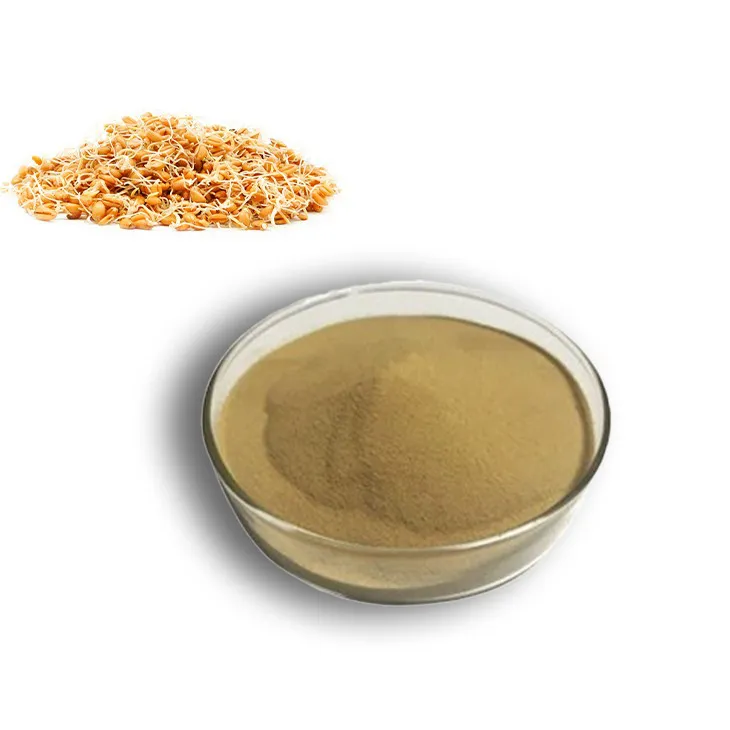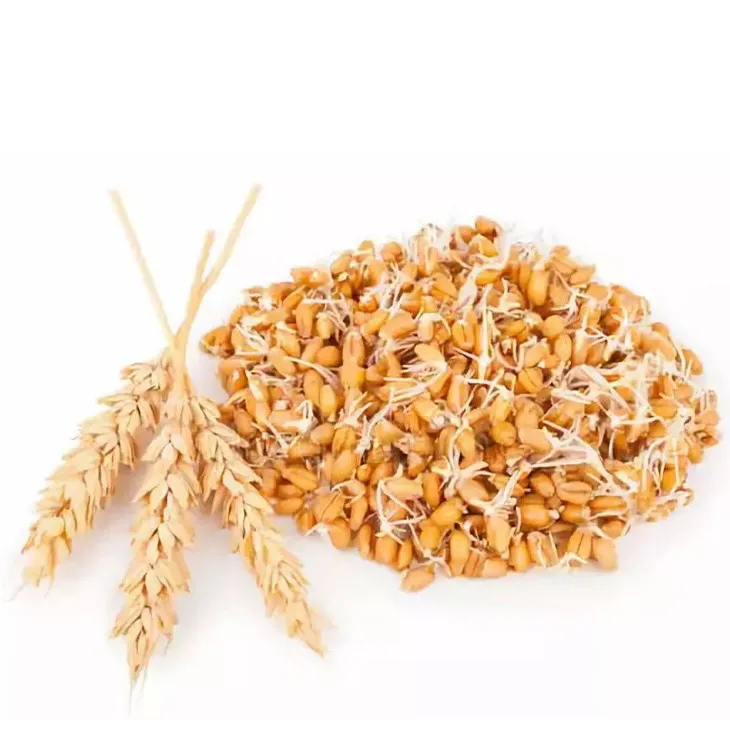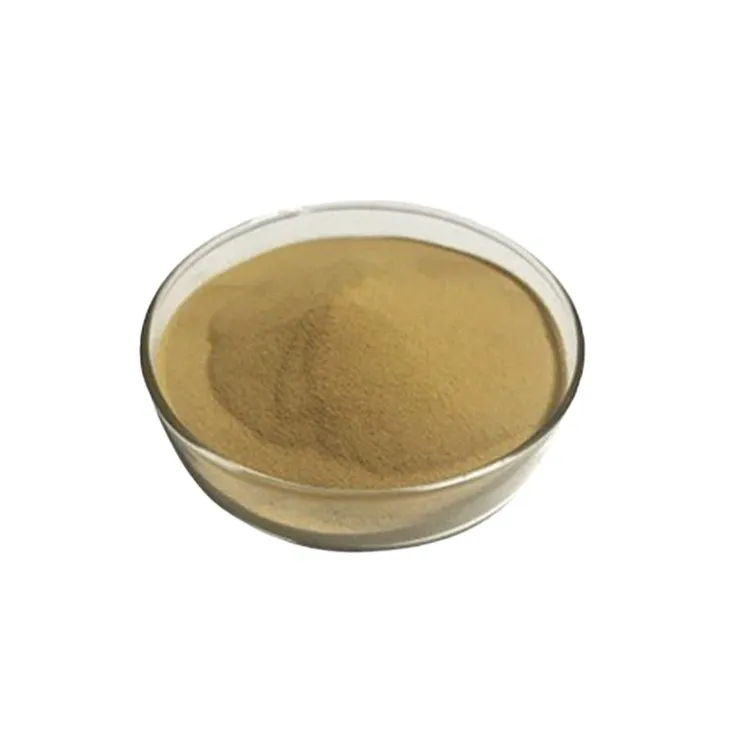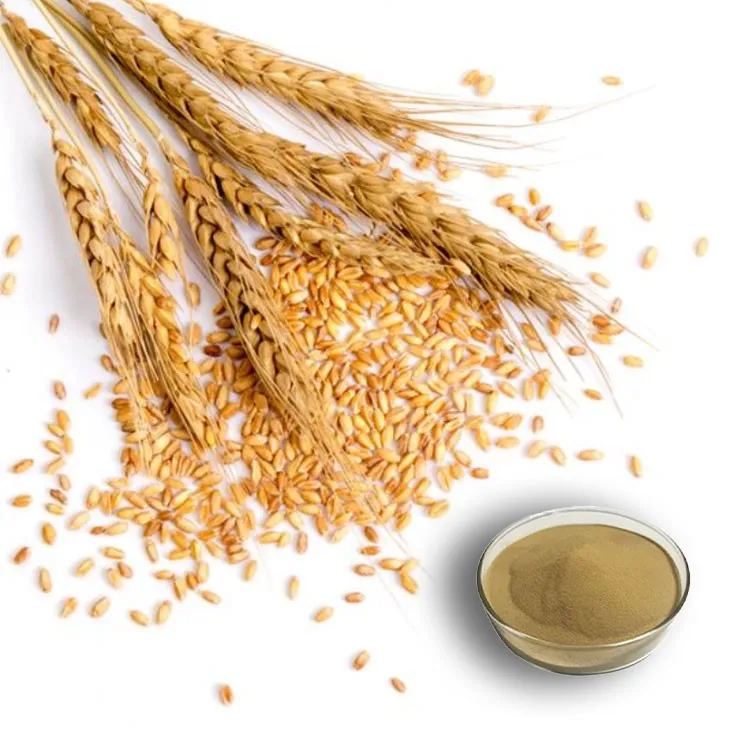- 0086-571-85302990
- sales@greenskybio.com
The best organic wheat germ extract.
2024-11-26

Introduction
In the world of natural health products, the search for the best organic Wheat Germ Extract has gained significant attention. Organic Wheat Germ Extract is a remarkable substance that is a concentrated form of the nutrient - rich part of the wheat kernel. It has the potential to offer a wide range of health benefits, making it a sought - after ingredient in various products, from dietary supplements to skincare items.

The Significance of Organic Origin
1. Soil Quality
- The soil in which the wheat is grown plays a crucial role in determining the quality of the wheat germ. Organic farming emphasizes the use of natural fertilizers and soil - building practices. For example, compost and cover crops are commonly used in organic wheat farming. Compost enriches the soil with essential nutrients, such as nitrogen, phosphorus, and potassium, in a slow - release and balanced manner. This leads to healthier wheat plants and, consequently, better - quality wheat germ.
- In contrast, conventional farming often relies on synthetic fertilizers, which can sometimes lead to an imbalance in soil nutrients. Organic soil management helps maintain a diverse soil microbiome. Microorganisms in the soil break down organic matter, releasing nutrients in a form that the wheat plants can easily absorb. This symbiotic relationship between the soil and the plants is vital for the production of high - quality wheat germ.
- The climate in which the wheat is cultivated also affects the wheat germ. Wheat is a crop that is sensitive to temperature, rainfall, and sunlight. Ideal climate conditions allow the wheat to grow steadily and develop fully. For instance, a temperate climate with moderate rainfall and sufficient sunlight during the growing season is conducive to the production of healthy wheat kernels with a rich germ.
- Extreme weather conditions, such as drought or excessive rainfall, can stress the wheat plants and potentially reduce the quality of the germ. Organic farming practices may offer some resilience to these climatic challenges. For example, the use of mulching in organic fields can help retain soil moisture during dry periods and prevent waterlogging during heavy rains.
- Organic farming techniques are more holistic and environmentally friendly. Crop rotation is a common practice in organic wheat farming. This involves alternating the cultivation of wheat with other crops, such as legumes. Crop rotation helps break pest and disease cycles, reducing the need for chemical pesticides. It also improves soil fertility as different crops have different nutrient requirements.
- Weed control in organic farming is mainly achieved through mechanical means, such as hand - weeding or using cultivators. This ensures that the wheat is grown without the use of synthetic herbicides, which could potentially contaminate the wheat germ. Overall, these organic farming techniques contribute to a more natural and healthy wheat germ, free from the residues of harmful chemicals.

The Importance of the Extraction Process
1. Retaining Bioactive Compounds
- The extraction process of organic Wheat Germ Extract must be designed to retain its valuable bioactive compounds. These include phytochemicals such as phenolic acids, flavonoids, and carotenoids. Phenolic acids, for example, have antioxidant properties that help protect the body's cells from damage caused by free radicals. Flavonoids are known for their anti - inflammatory effects, which can be beneficial for reducing chronic inflammation in the body.
- Gentle extraction methods are crucial to preserve these bioactive compounds. Harsh extraction techniques, such as high - temperature or chemical - intensive processes, can degrade these sensitive substances. For instance, if the extraction process involves excessive heat, the flavonoids may lose their antioxidant and anti - inflammatory activities. Therefore, methods like cold - pressing or supercritical fluid extraction are often preferred as they can maintain the integrity of the bioactive compounds in the wheat germ extract.
- The extraction process should also be efficient to ensure a high yield of the desired components. This requires careful selection of extraction solvents and parameters. For example, the choice of solvent can significantly affect the extraction efficiency. Some solvents are more effective at dissolving specific bioactive compounds than others. Ethanol is a commonly used solvent in the extraction of wheat germ extract as it can dissolve a wide range of phytochemicals while being relatively safe and easy to handle.
- Optimization of extraction parameters such as extraction time, temperature, and solvent - to - sample ratio is also essential. By carefully controlling these parameters, it is possible to maximize the extraction of bioactive compounds while minimizing the extraction of unwanted substances. For example, if the extraction time is too long, it may lead to the extraction of impurities along with the desired compounds, reducing the purity of the final extract.

Absorption by the Body
1. Formulation for Optimal Absorption
- The best organic wheat germ extract should be formulated in a way that promotes easy absorption by the body. One aspect of this is the particle size of the extract. Smaller particle sizes are generally more easily absorbed. For example, micronized wheat germ extract has a larger surface area, which allows for more efficient interaction with the digestive enzymes in the gut and subsequent absorption into the bloodstream.
- Another factor is the presence of carriers or enhancers in the formulation. Some substances, such as phospholipids, can act as carriers for the bioactive compounds in the wheat germ extract. They can help encapsulate the compounds and transport them across the cell membranes in the gut, facilitating their absorption. Additionally, certain vitamins and minerals in the formulation can also enhance the absorption of the wheat germ extract. For example, vitamin C can enhance the absorption of iron from the wheat germ extract, especially if the extract contains iron - rich compounds.
- The organic wheat germ extract should be compatible with the body's digestive and metabolic systems. It should not cause any adverse reactions or digestive discomfort. For example, if the extract contains high levels of fiber, it should be in a form that is easily digested. Some forms of wheat germ extract may be pre - digested or enzymatically treated to improve their digestibility.
- The bioactive compounds in the extract should also be able to interact effectively with the body's cells and tissues. For instance, the antioxidant compounds in the wheat germ extract should be able to reach the cells where they are needed to neutralize free radicals. This requires that the extract is able to pass through the various barriers in the body, such as the intestinal wall and the cell membranes, without being degraded or excreted prematurely.

Transparency in Production and Labeling
1. Ingredient Disclosure
- From a consumer perspective, transparency in production starts with clear ingredient disclosure. The label of the best organic wheat germ extract product should list all the ingredients present in the extract. This includes not only the main component, which is the wheat germ extract itself, but also any additional substances used in the extraction process or added for formulation purposes. For example, if a stabilizer or preservative is used, it should be clearly stated on the label.
- Consumers have the right to know what they are consuming, especially in the case of dietary supplements. Some people may have allergies or sensitivities to certain ingredients. For instance, if the wheat germ extract is processed using a solvent that may cause allergic reactions in some individuals, such as sulfites, this information should be provided on the label.
- The label should also indicate the source of the wheat used in the production of the extract. This can include information such as the country or region where the wheat was grown. Knowing the source of the wheat can be important for several reasons. For example, different regions may have different soil and climate conditions, which can affect the quality of the wheat germ. Additionally, some consumers may prefer to support local or sustainable farming practices, and information about the source of the wheat can help them make an informed choice.
- Information about the type of wheat used, such as whether it is a specific variety known for its high - quality germ, can also be beneficial. For example, some heirloom wheat varieties may have unique nutritional profiles compared to common commercial varieties.
- The extraction method used to produce the wheat germ extract should be clearly stated on the label. As discussed earlier, different extraction methods can have an impact on the quality and composition of the extract. Consumers who are interested in the integrity of the bioactive compounds in the extract may prefer products that use gentle and natural extraction methods, such as cold - pressing.
- By providing information about the extraction method, manufacturers can build trust with consumers. It also allows consumers to compare different products and make a more informed decision based on their preferences for extraction techniques and the resulting quality of the extract.
Applications of the Best Organic Wheat Germ Extract
1. Dietary Supplementation
- One of the main applications of the best organic wheat germ extract is in dietary supplementation. It is a rich source of nutrients such as vitamins (including vitamin E, which is a powerful antioxidant), minerals (such as zinc and magnesium), and essential fatty acids. These nutrients are important for maintaining overall health and well - being. For example, vitamin E helps protect the body's cells from oxidative damage, which can contribute to the prevention of chronic diseases such as heart disease and cancer.
- The wheat germ extract can also be used to boost energy levels. It contains complex carbohydrates and proteins that can provide a slow and sustained release of energy. This can be particularly beneficial for individuals who are physically active or those who need an energy boost during the day. Additionally, the immune - enhancing properties of the wheat germ extract, due to its bioactive compounds, can help support the body's immune system, reducing the risk of infections.
- In the realm of skincare, the best organic wheat germ extract has also found its place. It is rich in antioxidants, which can help protect the skin from damage caused by environmental factors such as UV radiation and pollution. These antioxidants can neutralize free radicals on the skin's surface, preventing premature aging and maintaining the skin's elasticity.
- The extract also contains fatty acids and vitamins that can nourish the skin. For example, the essential fatty acids can help improve the skin's moisture barrier, preventing dryness and keeping the skin hydrated. Vitamins in the wheat germ extract, such as vitamin A and vitamin E, can promote skin cell renewal, resulting in a more youthful and radiant complexion.
Conclusion
In conclusion, the best organic wheat germ extract is characterized by its origin from high - quality organic wheat, a gentle and efficient extraction process, good absorption by the body, and transparency in production and labeling. Whether it is used for dietary supplementation to improve health and vitality or in skincare products to enhance beauty, the quality, purity, and effectiveness of the organic wheat germ extract are crucial factors. As consumers become more aware of the importance of natural and healthy products, the demand for the best organic wheat germ extract is likely to continue to grow. Manufacturers should strive to meet these high standards to provide consumers with products that truly deliver on their promised benefits.
FAQ:
What are the benefits of organic wheat germ extract?
Organic wheat germ extract contains bioactive compounds such as phytochemicals with antioxidant, anti - inflammatory, and health - promoting effects. It can be used for dietary supplementation to boost energy and immunity, and in skincare products for a youthful glow.
How does the origin affect the quality of organic wheat germ extract?
The origin is important as the soil quality, climate, and farming techniques in organic wheat cultivation contribute to the overall quality of the wheat germ. Organic farming practices lead to a more natural and healthy wheat germ.
What is the significance of the extraction process in organic wheat germ extract?
The extraction process is crucial. Gentle and efficient extraction methods are required to retain the bioactive compounds. These compounds are what give the extract its antioxidant, anti - inflammatory, and other beneficial properties.
Why is absorption important for organic wheat germ extract?
Absorption is important because if the extract is not easily absorbed by the body, it cannot effectively provide its health - promoting benefits. Its formulation and the presence of other substances that can enhance absorption are related to this aspect.
What should consumers look for in terms of labeling when choosing organic wheat germ extract?
Consumers should look for transparency in production. The label should clearly state the ingredients, the source of the wheat, and the extraction method.
Related literature
- Title: The Nutritional and Therapeutic Potential of Organic Wheat Germ Extract"
- Title: "Organic Wheat Germ Extract: From Farm to Function"
- Title: "Quality Assessment of Organic Wheat Germ Extract in Dietary Supplements"
- ▶ Hesperidin
- ▶ citrus bioflavonoids
- ▶ plant extract
- ▶ lycopene
- ▶ Diosmin
- ▶ Grape seed extract
- ▶ Sea buckthorn Juice Powder
- ▶ Beetroot powder
- ▶ Hops Extract
- ▶ Artichoke Extract
- ▶ Reishi mushroom extract
- ▶ Astaxanthin
- ▶ Green Tea Extract
- ▶ Curcumin Extract
- ▶ Horse Chestnut Extract
- ▶ Other Problems
- ▶ Boswellia Serrata Extract
- ▶ Resveratrol Extract
- ▶ Marigold Extract
- ▶ Grape Leaf Extract
- ▶ blog3
- ▶ blog4
-
The best pitaya powder on the market.
2024-11-26
-
Optimal Bioavailability of Feverfew Extract.
2024-11-26
-
Bulk purchase of orange - flavored powder.
2024-11-26
-
Nature's best cytisine.
2024-11-26
-
Kudzu root extract suppliers.
2024-11-26
-
Senna Leaf Extract
2024-11-26
-
Black Rice Extract
2024-11-26
-
Sophora Japonica Flower Extract
2024-11-26
-
White Peony Extract
2024-11-26
-
Elderberry Extract
2024-11-26
-
Carrageenan Extract Powder
2024-11-26
-
Kidney Bean Extract
2024-11-26
-
Jujube Extract
2024-11-26
-
Plantain extract
2024-11-26
-
Giant Knotweed Extract
2024-11-26





















